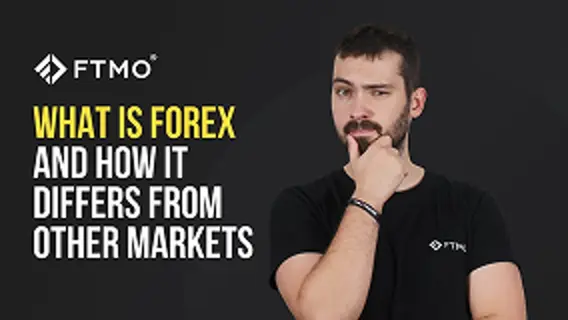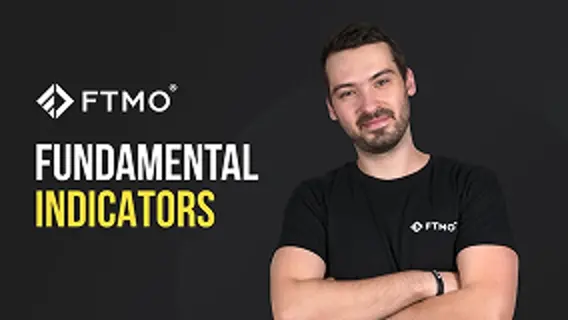
How much should you risk on one trade?
Money management is one of the most important factors affecting a trader's long-term performance in trading. However, how much a trader risks on each open trade significantly affects not only the trader's results, but also, for example, his or her mental state.
Risk per trade idea is one of the most widely discussed topics that all traders speculate about. It is also the area where inexperienced traders make the biggest mistakes. In most discussions, articles and tutorials, you will find information that a trader should not risk more than 1% of his account size on a single trade. No matter how big an account you trade on, this one percent is the mantra that many traders follow.
When trading forex or CFDs, you have the option to trade using leverage, which increases your potential profits (and of course, proportionally to the risk, which is something to be reckoned with). Leverage allows you to profit even in markets with relatively low volatility, as it significantly increases your buying power. So even with a relatively small amount of money invested, you can multiply your exposure significantly by having a lower percentage of margin that is used for the position that you would normally need to cover with your own cash.
Why professionals don’t use high risk on one trade
For example, we can generally recommend to our FTMO Traders not to risk more than 1% per trade idea to help them with adopting safe risk management principles. It's not that we want to restrict you from doing anything, but risking a big portion of your Maximum Daily Loss on a single trade idea may suggest that your strategy is not robust enough or that you do not have high confidence in it. A robust strategy should demonstrate a statistical edge, but it’s hard to derive any meaningful statistical output from a very small sample of positions. Everyone is wrong sometimes and using very high risk per trade idea can lead to the account failure very quickly. With a long-term winning trading strategy, you should be more comfortable to rely on your statistical edge and take larger number of smaller trades, rather than hoping that you will be right on a very few trades. Using very large risk per trade idea seems to demonstrate that you are in a hurry to pass our Trading Objectives quickly, and you basically put all your eggs in the same basket.On an FTMO Account, as well as in the Evaluation Process, you are not pressured by deadlines that would force you to open unnecessarily risky positions.
Losing 3% or 4% on a single trade means that if you do it in one day, you will lose your FTMO Account after two trades or fail to succeed in the Evaluation Process. You will exceed the Maximum Loss after just three or four trades. Such trading might resemble situations where the traders don't care about the longevity and sustainability of their trading, and only rely on tossing their coin in the hope of scoring sooner or later. It just looks like pure gambling.
Risking and losing too much on one trade means that you will have to make up for that unnecessarily large loss with other trades. If you lose 8% on two positions, for example, you already need to earn 8.7% to break even. This can put you under unnecessary psychological pressure. And a trader who is not comfortable and in the right state of mind usually makes unnecessary mistakes.
Reasonable risk as a path to consistent results
Of course, the mentioned one percent risk per trade idea is not a condition that guarantees you regular profits, it simply increases your odds. If your strategy is good enough and has an edge, lowering the risk per trade idea is a way to increase your chances or sustain an unexpected losing streak. Having the best plan in chess does not guarantee you will win the match; however, it inevitably increases the probabilities with respect to someone with no plan (or playing/trading randomly).
It is up to you to decide what risk per trade you are comfortable with and what you are satisfied with. If you're a swing or position trader who counts on holding positions for a long period of time, it's possible to risk a little bit more. In this case, it is likely that you will not open multiple positions in one day and you may hold a position for several days or weeks. Such strategies are not commonly observed on leveraged accounts but more commonly with long term holding of equities, indices or cryptos and in general is closer to investing than actual CFD trading.
Markets change over time, and each strategy may have periods where it experiences a series of downturns. More experienced traders are able to adapt to such conditions and can then adjust their risk per trade accordingly. Thus, when you have a long period of bad luck, you can reduce your risk per trade idea; on the other hand, when you have a successful streak, you can risk a little more. Simply put, the risk per trade idea is just what you can still control, even if the market situation is uncertain or your strategy is currently not delivering the results you want.
At FTMO, we actively monitor the activities of our traders and observe trends in how traders approach trading in general. The maximum recommended risk on one trading position is a whopping 1% to 1.5% of the initial account balance (i.e. $1,000 to $1,500 on a 100k account). This approach is recommended to ensure you don’t fall into our high-risk monitoring, where we’d need to contact you and address your risk appetite or enforce protective measures to ensure you are not misusing our services or falling into gambling habits.
Reasonable risk per trade will give you the much-needed psychological comfort that will prevent you from making unnecessary mistakes. In turn, it will show us that you are a trader who is serious about trading and wants to make consistent profits over the long term. And we love to see traders who are able to show us a functional strategy that doesn't rely on luck of the draw. Remember, trading is not a sprint, but a marathon. Trade safe!
About FTMO
FTMO has developed a two-step evaluation process to find trading talents. Upon successful completion, you may be eligible for an FTMO Rewards Account with a balance of up to $200,000 in simulated funds. How does it work?















